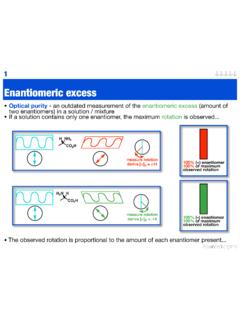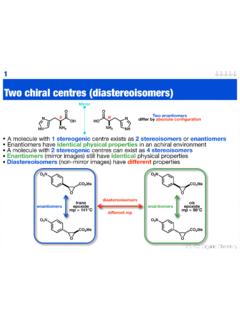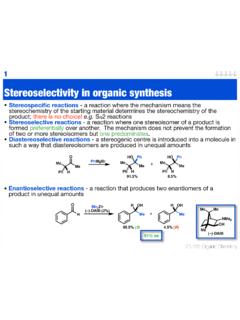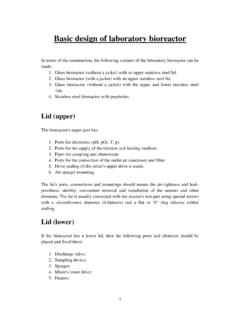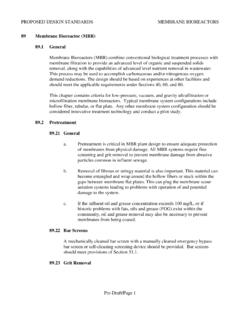Transcription of Clean-in-place systems for industrial bioreactors: …
1 Journal of industrial Microbiology, t3 (1994) 201-207. 9 1994 Society for industrial Microbiology 0169-4146/94/$ Published by The Macmillan Press Ltd Short Review Clean-in-place systems for industrial bioreactors: design, validation and operation Yusuf Chisti and Murray Moo-Young Department of Chemical Engineering, University of Waterloo, Waterloo, Ontario, Canada N2L 3G1. (Received 31 August 1993; accepted 31 March t994). Key words: Clean-in-place ; Automatic cleaning; Bioreactors SUMMARY. Guidelines for design, validationand operation of clean-in-placesystemsfor industrialfermentationplant are presented. Design of vessels, surface finishes, materials of construction, types and locations of valvesare some of the considerationsaddressed.
2 Requisite levels of turbulence for cleaning of pipes and vesselsare discussedas well as typicalcleaningsequences. Recommendationsfor validationof cleaningare presented and the significanceof design of cleaning systems in ensuring satisfactoryvalidation is pointed out. To the extent possible, validationof cleaning shOuld be carried out with real process soil or soil closelysimulatingactual fermentationbroths. INTRODUCTION cleaned along with associated transfer piping. Thus, while some parts of the bioreactor train are being cleaned others Exacting requirements of cleanliness, prevention of con- are in processing. Except for the smallest reactors, cleaning tamination and sterile operation of biopharmaceutical pro- is invariably done automatically using Clean-in-place (CIP).
3 Duction plants place stringent demands on design, validation techniques. A properly designed, validated and operated and operation of in- place cleaning systems . These demands CIP system not only reduces downtime of bioreactors, but are very different from those encountered in 'hygienic' ensures consistency of the cleaning operation which is processing of food and dairy products. Here we will evaluate essential to achieving a contamination-free product with the cleaning problems in bioreactors and discuss the design fewer batch losses. of Clean-in-place (CIP) systems to handle those problems. Bioreactors are the core of any biopharmaceutical pro- THE CLEANING PROBLEM.
4 Duction plant. Biocatalysts - - microorganisms, animal or plant cells - - are produced and maintained in bioreactors. Irrespective of whether a stirred tank, bubble column, A production facility typically has a train of bioreactors ftuidized bed, external-loop airlift, or internal-loop airlift ranging over m 3. In a great majority of processes, reactor is used, the general features of these reactors are the reactors are operated in batch mode, under sterile similar. Some of the main features are illustrated in Fig. 1. or monoseptic conditions. The most common operational using the stirred tank bioreactor configuration as an example practice starts with culturing microorganisms or cells in the [3], These features must be understood to gain an appreciation smallest bioreactor .
5 After the batch time, the contents of of the cleaning problems. The reactor vessel is provided this reactor are transferred to a larger, pre-sterilized, with a vertical sight glass, and side ports for pH, temperature medium-filled, reactor and this process is repeated until the and dissolved oxygen sensors are a minimum requirement largest production reactor in the train is reached [5,6]. [3]. Retractable sensors which can be replaced during Further processing of the raw product, or downstream operation have additional implications for the design of the processing [6], is usually done under non-sterile, bioburden- CIP sequence. Connections for acid and alkali (for pH.)
6 Controlled, conditions until the final few finishing operations. control), antifoam agents and inoculum are located above As seen in this general process description, at any given the liquid level in the reactor vessel. A n air (or other gas time a plant may have several bioreactors at different stages mixture) sparger supplies oxygen (and sometimes CO2 or of processing and some empty reactors which need to be ammonia for pH control) to the culture [3]. When mechanical agitation is used, either a top- or bottom-entering agitator may be employed. The bottom entry design is more common Correspondence to: Y. Chisti, Dept of Chemical Engineering, and it permits the use of a shorter agitator shaft, often University of Waterloo, Waterloo, Ontario, Canada N2L 3G1.
7 Eliminating the need for support bearings inside the vessel 202. 11. 20. Cooling holes Teflon/ceramic bearing Coo in, holes ' ~ ~ _. 1 [ \ 22. 16. ) ao 9 15 Magnet Air - - , 1. 13 I:SE;. H a r v e s t / ~ ~ ~. valve location 2. Fig. 2. A magnetically coupled agitator. The rotating element in the bioreactor is supported on a ceramic/teflon bearing. The rotor Steam is provided with holes which allow circulation of culture fluid for cooling and lubrication. submerged aeration [5]. Aeration inevitably produces foam 14 which is controlled with a combination of chemical antifoam agents and mechanical foam breakers [3]. Foam breakers 7. are used exclusively when the presence of antifoams in the product is not acceptable or if the antifoam interferes with 13 ~____1 ~ I=:::::o 8 such downstream processing operations as membrane-based separations or chromatography.]
8 The shaft of the high speed mechanical foam breaker, as shown in Fig. 1, must also be sealed using double mechanical seals as explained for the agitator. As discussed later in this article, the product- 11 contacting surfaces of the foam breaker and part of the air exhaust pipe which may contact the foam must also be Fig. 1. A typical bioreactor : (1) reactor vessel; (2) jacket; (3) internally cleanable [3]. Details of a typical foam breaker insulation; (4) shroud; (5) inoculum connection; (6) ports for pH, are shown in Fig. 3. temperature and dissolved oxygen sensors; (7) agitator; (8) gas In most instances, the bioreactor is designed for a sparger; (9) mechanical seals; (10) reducing gearbox; (11) motor; maximum allowable working pressure of 40--45 , at a (12) harvest nozzle; (13) jacket connections; (14) sample valve with design temperature of 150-180 ~ [3].
9 The vessel is designed steam connection; (15) sight glass; (16) connections for acid, alkali to withstand full vacuum [3]. Overpressure protection is and antifoam chemicals; (17) air inlet; (18) removable top; (19) provided by a rupture disc located on top of the bioreactor . medium or feed nozzle; (20) air exhaust nozzle; (21) instrument Other items located on the head plate of the vessel are ports (several); (22) foam breaker; (23) sight glass with light (not nozzles for media or feed addition and for sensors ( shown) and steam connection; (24) rupture disc nozzle. foam electrode), and instruments ( pressure gauge). A. CIP system must adequately clean all these items.
10 [3]. The shaft of the agitator is provided with steam- The CIP devices and procedures must be matched to sterilizable, single or double mechanical seals. Double seals the specific configuration of the bioreactor and to the are preferred, but they require lubrication with cooled clean fermentation process to ensure satisfactory cleaning. For steam condensate. Alternatively, when torque limitations example, as a rule, a bioreactor which has processed allow, magnetically-coupled agitators may be used thereby hybridoma or other animal cell culture broth is far easier eliminating the mechanical seals. The magnetic coupling to clean than one which has processed broths of Streptomyces assembly must be located within the vessel and the design or such other mycelial fungi as Penicillium chrysogenum or of the coupling, as well as the design of the cleaning Tolypocladium inflatum.
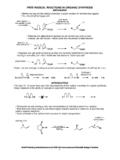

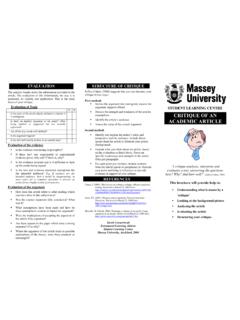
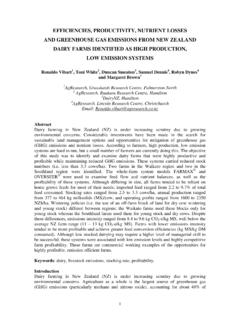
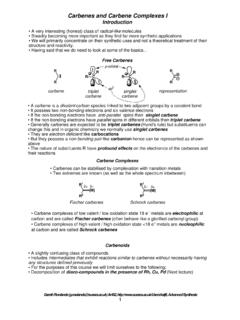
![[3,3]-Sigmatropic rearrangements - Massey University](/cache/preview/0/2/0/3/3/7/7/a/thumb-0203377a43e519e583835c335072f8b8.jpg)
